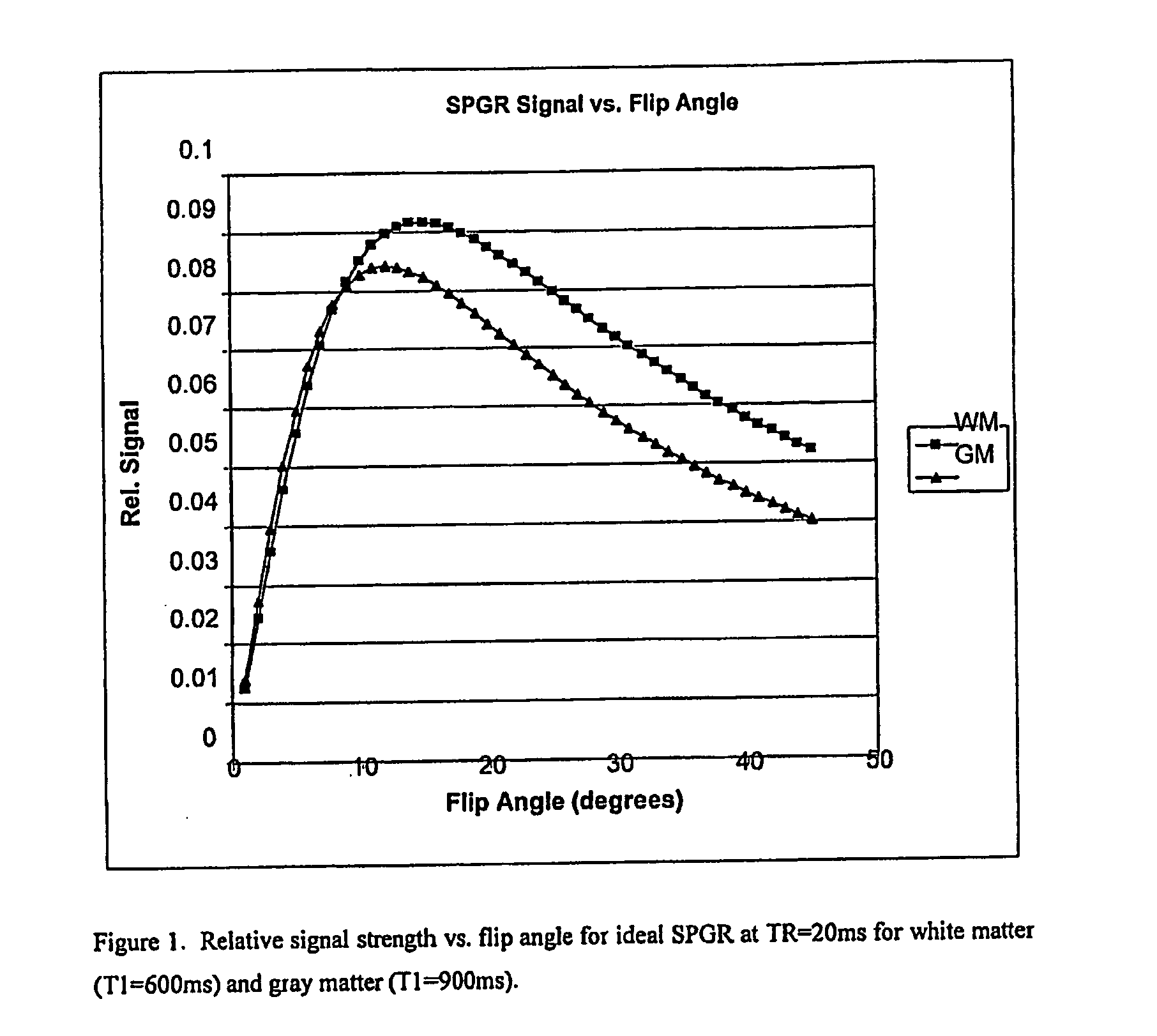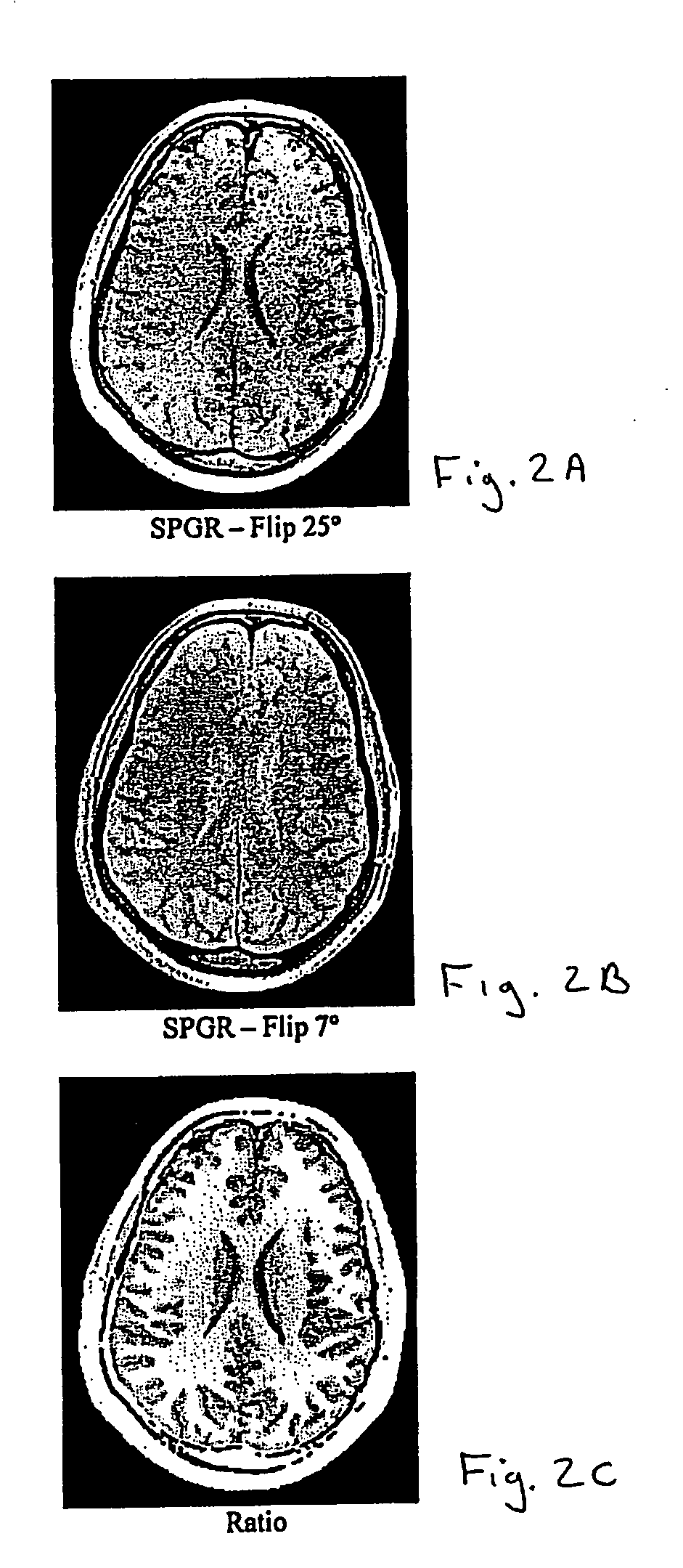Brain tissue classification
- Summary
- Abstract
- Description
- Claims
- Application Information
AI Technical Summary
Benefits of technology
Problems solved by technology
Method used
Image
Examples
Embodiment Construction
[0027] A CSF boundary detection procedure includes the steps shown below.
[0028] 1. Image pair pre-processing to enhance contrast and reduce bias (optional).
[0029] 2. WM / GM / CSF thresholded classification / inhomogeneity correction.
[0030] 3. Thin sulcus detection using the gray matter skeleton.
1. Image Pair Pre-Processing
[0031] Two MRI volumes can be acquired using identical acquisition parameters, varying, for example, one acquisition parameter. These two volumes can be co-registered, if necessary, using known methods. Then the ratio of the two volumes is determined (any division by zero is replaced with the value zero). The ratio, for example, may be based on a voxel by voxel or data point by data point calculation. Determining the ratio of the two volumes has two advantages. First, intensity variations due to field inhomogeneities tend to be similar in both images, so the division tends to normalize this undesirable effect such that it is insignificant. Second, when the acquisi...
PUM
 Login to View More
Login to View More Abstract
Description
Claims
Application Information
 Login to View More
Login to View More - R&D Engineer
- R&D Manager
- IP Professional
- Industry Leading Data Capabilities
- Powerful AI technology
- Patent DNA Extraction
Browse by: Latest US Patents, China's latest patents, Technical Efficacy Thesaurus, Application Domain, Technology Topic, Popular Technical Reports.
© 2024 PatSnap. All rights reserved.Legal|Privacy policy|Modern Slavery Act Transparency Statement|Sitemap|About US| Contact US: help@patsnap.com










